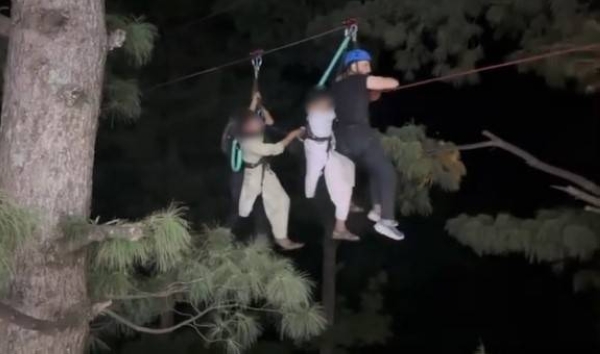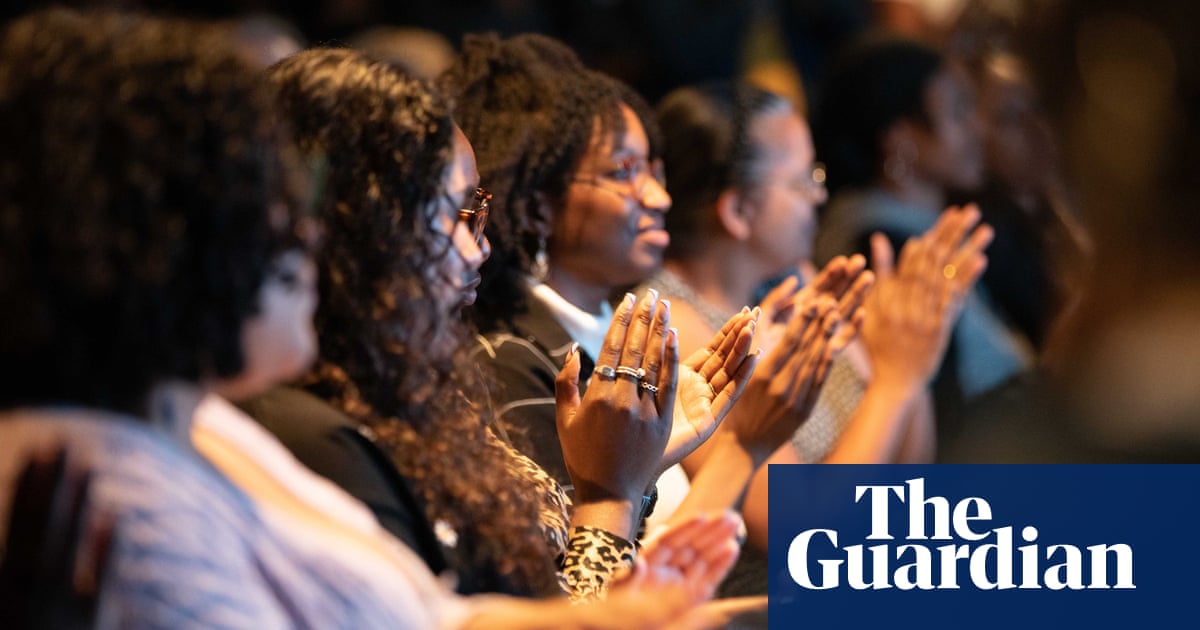
The transgender Mexican artist lost their sight to an HIV-related illness – and their art blossomed. As a major exhibition opens in Dundee, they explain their defiance of illness and gender norms
Thu 25 Aug 2022 11.45 BST
Manuel Solano is remembering trying to paint for the first time after going blind. “I thought it was a joke: I thought it was over for me, as a painter.”
Their work from that period is harsh and urgent, clawed on to the canvas in jangling colour. Solano named the series Blind Transgender with Aids: a bitter joke reflecting their conviction that the work would attract attention only as a curiosity. “These stupid, ugly paintings … it was like giving the finger to the visual, fully abled world.”
Born in Mexico City, now based in Berlin, Solano was 26 when they lost their sight to an HIV-related illness that left their already slight body scarred. Their earlier work was cool and precise: paintings of glacial, otherworldly interiors, and performances that played on their androgynous beauty. A new exhibition, The Top of Each Ripple, at Dundee Contemporary Arts offers a recent overview. The furious Blind Transgender with Aids series has given way to atmospheric paintings evoking episodes from Solano’s memory: a woman with heavy bangles dropping her car keys on a glass-topped hall table; the mural above a mall entrance; an infant playing with plastic whale toys by the TV.
It took time for Solano to develop a way to work again. Losing their sight was one hurdle: losing independence another: “I was very much a loner before I became blind. One of the toughest lessons has been having to rely on other people and accept that I need help in some situations.” Solano worked with close friends and family: an ex-partner now runs their studio with three production assistants (“a group of very talented painters in their own right”). They have developed a method of mapping each working canvas into sections using nails, wire and pipe-cleaners, around which Solano navigates by touch.
DCA has programmed a season of music, readings and films linked to Solano’s work. One surprise inclusion is Jurassic Park. A dino nerd as a kid, Solano now sees the positioning of dinosaurs in pop culture as symptomatic of the weird way preconceptions around gender identity manifest (indeed, this will be the subject of a new body of work to be shown at London’s Carlos/Ishikawa gallery later this year).
The link between dinosaurs and birds has been known for years, explains Solano, yet they are seldom pictured with feathers: “A lot of the values associated with birds are, in human terms, associated with femininity: they’re fragile, they’re graceful, they’re flamboyant.” It is for this reason, the artist suggests, that dinosaurs remain lizard-like in the popular imagination: we have come to identify them with masculine character traits.
Illness came just as Solano was starting to explore their own gender identity. For a performance in 2012, they recreated Sinéad O’Connor’s infamous pope-ripping appearance on Saturday Night Live. Shaving their head for the performance, thought Solano, was “going to be the moment I went from being a very feminine boy to a more masculine grown man like my dad.” Instead, they felt intensely uncomfortable, “I would say even suicidal for a time: I hated looking at myself in the mirror.”
Solano soon realised they did not want to become that grown man: that they were becoming a different person. “My brother put it very eloquently. He said that I looked like a woman who was trying to look like a man. That felt very on point.” A fascination with “masculine” women – Robin Wright, Michelle Obama – emerges in Solano’s paintings of pop culture icons. In the video work Masculina, the artist appears as though in a fashion shoot or music video, dressed in revealing 1980s-inspired silhouettes that billow seductively in the breeze.
I suggest Masculina defies taboos attached to the ill body. “I wanted the audience to see that it’s not an ill body,” Solana gently corrects me. “It’s a body that went through illness, and past it. A lot of people forget that. I have to constantly remind myself that I am healthy and beautiful.”
After moving to Berlin in 2019 they found themselves seduced by the city’s liberated body culture; its naked swimming and saunas. “Years ago, I would have been completely terrified to do this, being covered in scars,” Solano admits, but now “I have discovered almost a passion for being in a group where everybody is naked. With time, I’ve learned to not think about my scars any more. A lot of people seem to not even notice them.”
The politics of looking and being looked at are addressed in a video self-portrait in which Solano occasionally breaks into a smile and appears to lock eyes with us. Viewers have time to scrutinise Solano’s face. “But I also wanted the audience to come away feeling that I could see them, too.”
Manuel Solano: The Top of Each Ripple is at Dundee Contemporary Arts from 27 August to 20 November.












